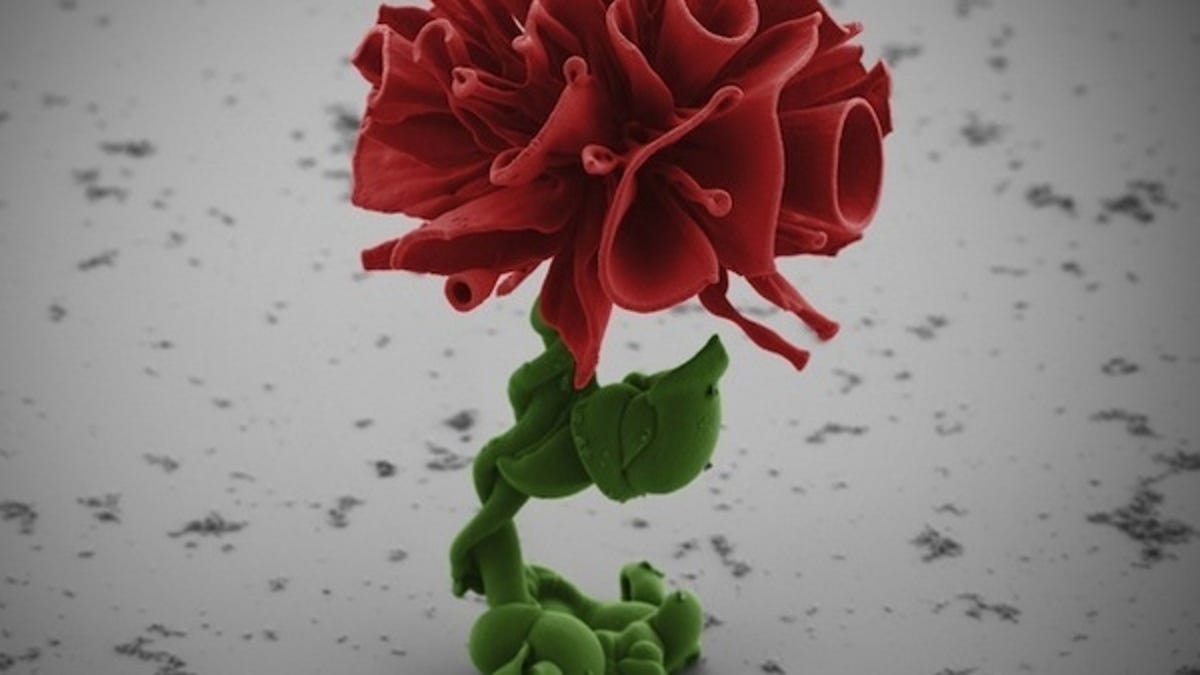Tiny crystal flowers bloom in a beaker
Scientists at Harvard have coaxed beautiful microscopic crystal flowers to form in a beaker of chemical fluid.

When you think of the word "crystal," you think, perhaps, of wedges of quartz stone, ice crystals, and salt -- not organic flowing forms or flowers. But by manipulating chemical gradients in a beaker of fluid, Harvard postdoctoral fellow Wim L. Noorduin has managed to control the growth of barium carbonate crystals to form very controlled sculptures of flowers, with petals, stems, and leaves.
How the crystal forms depends on the mixture of chemicals in a solution. As the chemical gradients react, the pH can change, causing the crystals to grow away from or toward the gradient, enabling Noorduin to coax the forms into leaves radiating outward, a ling, thin stem, or the petals of the flower head.
To create the crystals, the team from Harvard's School of Engineering and Applied Sciences dissolved barium chloride and sodium silicate in a beaker of liquid. Carbon dioxide, naturally dissolving into the liquid, sets of a reaction that precipitates the formation of barium carbonate. Additionally, it lowers the pH balance immediately around the crystals, adding a layer of silica and allowing the crystals to continue to form.
The work, said Noorduin, is meant to enhance the understanding of self assembly, which could potentially revolutionize the manufacture of tiny electronics. "For at least 200 years, people have been intrigued by how complex shapes could have evolved in nature," he said. "This work helps to demonstrate what's possible just through environmental, chemical changes."
The research paper, called "Rationally Designed Complex, Hierarchical Microarchitectures," can be read online in the journal Science.
(Source: Crave Australia)

